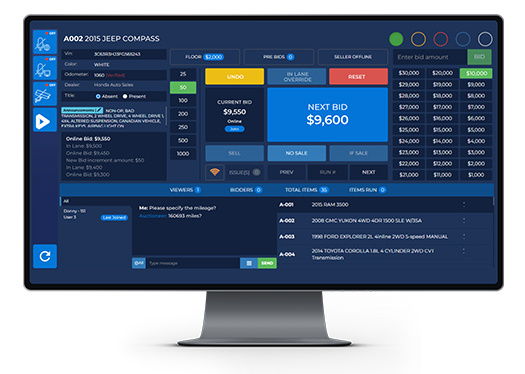News
Nov 17, 2023 - 07:46:39 am
Maximizing Reach and Revenue with Simulcast Auctions: A Seller's Guide

Navigating the labyrinth of auctioneering can be daunting, especially in the digital age. Enter Simulcast Auctions: a fusion of the digital and physical realms that promises sellers unparalleled reach and revenue. For sellers ready to harness this potent force, this is your comprehensive guide.
Diving Into Simulcast Bidding
Simulcast bidding is the innovative blending of live, physical auctions with the vastness of the online world. Sellers can host an auction in real-time, allowing both physical and virtual participants to bid concurrently.
Jessica Collins, a renowned auctioneer, says, "Simulcast auctions represent a frontier of limitless possibilities. It's where tradition meets modernity, and the results can be astounding."
Money on the Table: Raising Funds for an Auction
Funding an auction can seem like a catch-22; you need money to make money. But, strategies exist:
- Sponsorships: Partnering with businesses that target the same demographic can be mutually beneficial.
- Ticket Sales: Charging an entry fee for exclusive auctions.
- Consignments: Selling on behalf of a third party and earning a commission.
Strategies to Supercharge Your Auction
Ascending Price Auction Strategy: Begin with a low asking price, and allow participants to increase their bids openly. This tactic, the most popular auction type, creates competition and drives prices up.
Dutch Method: Initiate the auction with a high price that's progressively lowered until a participant accepts the offer. It's a rapid-fire approach, ensuring quick sales.
Engage and Educate: Offer workshops, webinars, or guides. Buyers more informed about items or the process often bid more aggressively.
Flipping the Script: Is Auction Flipping Profitable?
Buying items at a lower price in one auction and selling them at a higher price in another, known as auction flipping, can be lucrative. Sarah Mitchell, a professional flipper, testifies, "It's all about knowledge and timing. When done right, the ROI can be incredibly rewarding."
Bidding Strategies: Dominance and Optimization
The Dominant Strategy is about consistency. Irrespective of what others bid, if a seller or buyer employs the same profitable strategy every time, they're using the dominant strategy.
For bidders, the Optimal Bidding Strategy often involves determining the true value of an item and then bidding just a tad higher to ensure a winning bid without overpaying.
A Look at Auction Types
English Auction: The classic open, ascending-price model.
Dutch Auction: A descending price model where the first bid often wins.
First-price Sealed-bid: Bidders submit one sealed bid; the highest wins.
Vickrey Auction: Bidders submit sealed bids, but the highest bidder pays only the second-highest bid.
Of these, the English Auction is the most widespread and often considered the most engaging.
Simulcasting vs. Multistreaming: Know the Difference
While both concepts sound similar, there's a clear distinction. Simulcasting refers to broadcasting an event across multiple platforms or mediums simultaneously. In contrast, multistreaming is about streaming on multiple platforms, but not necessarily at the same time or with the same content.
Why Use Simulcasting?
The answer is twofold: reach and revenue. Simulcasting allows sellers to tap into a broader audience, increasing engagement and potential profits.
Understanding Bids
Absolute Bid: The maximum amount a buyer is willing to pay.
Incremental Bid: Bidding in predetermined increments.
Reserve Bid: The minimum amount a seller is willing to accept.
In Conclusion
Simulcast auctions are not just a trend but a paradigm shift. The fusion of traditional and digital methods promises sellers an auction experience that's efficient, engaging, and, most importantly, profitable. As Jessica Collins wisely puts it, "In the world of auctions, those willing to adapt are those who thrive." So, are you ready to maximize your reach and revenue?
